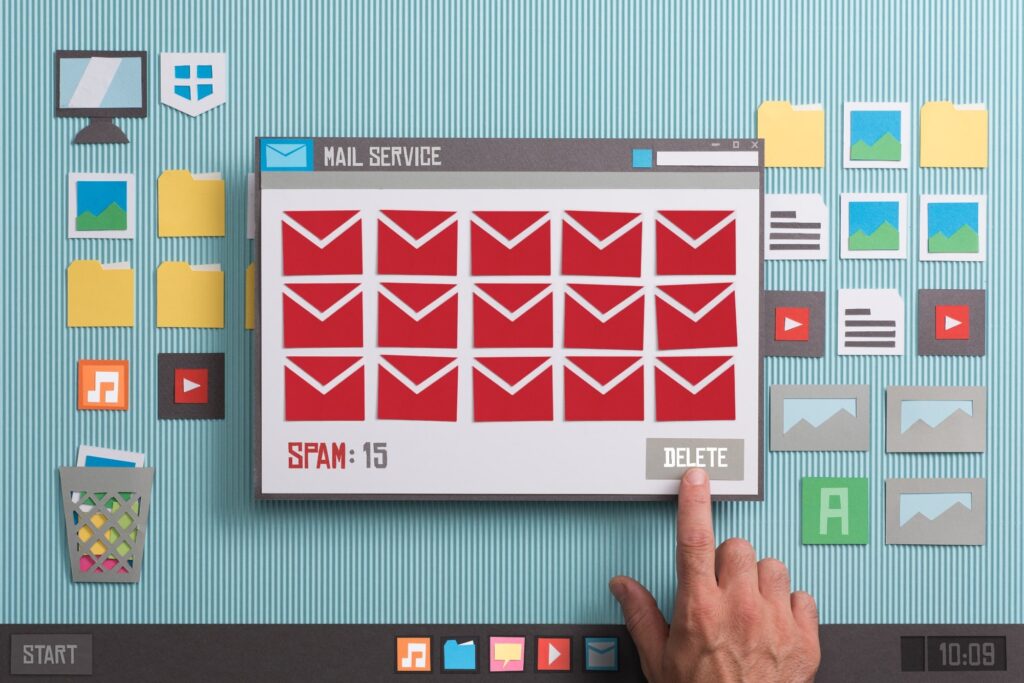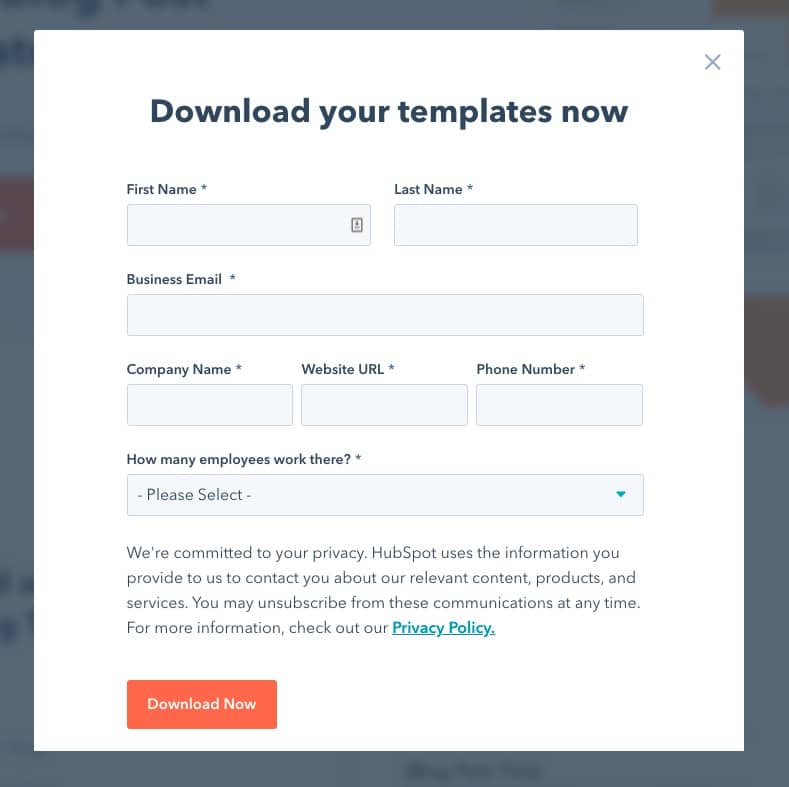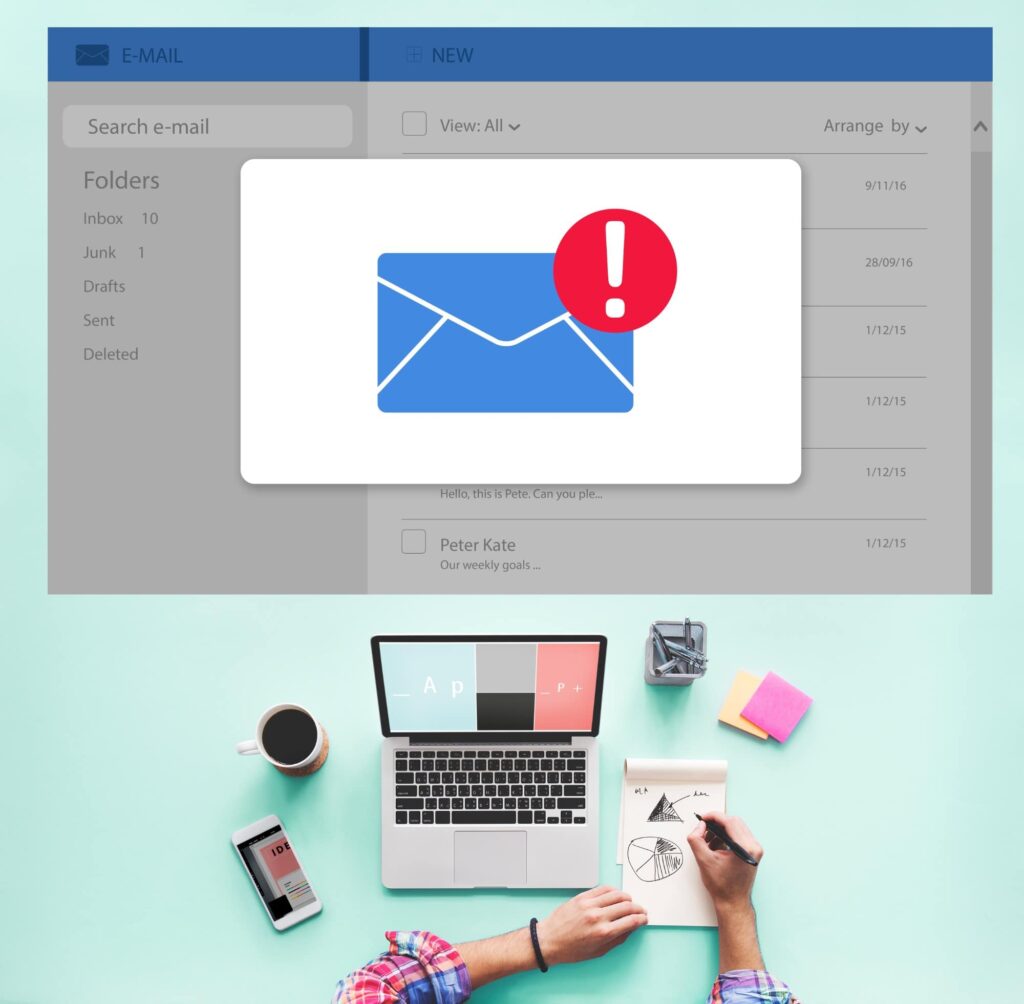According to Cisco Talos intelligence, less than 16% of the daily email volume for August 2021 was legitimate email communication….
According to Cisco Talos intelligence, less than 16% of the daily email volume for August 2021 was legitimate email communication. In the previous month of 2021, an average of 282.93 Billion spam emails were sent per day.
With numbers like this, it’s easy to see my reality is not everyone’s. For someone who is a decision-maker at a big company, works at a company that handles sensitive information (Tax software, banks, etc.), or is elderly, it’s a much different story.
Email service providers (Gmail, Outlook, Yahoo, etc.) have spam filters that use a combination of defined factors and machine learning to protect your inbox from spam. The exact combination of factors is unknown, but we do know that emails marked as spam play a large role in the decisions made by ESPs.
Email marketing is policed by international organizations, governments, and laws. Email marketing software providers (ActiveCampaign, Mailchimp, etc.) are also on the lookout for violators.
But by far the biggest body governing spam is the army of everyday internet users. When an email recipient marks an email as spam, they are potentially preventing that organization from sending email to others. Too many run-ins with citizen email regulators will damage your sender reputation and spam score and result in deliverability issues.

We are assuming you’re an email marketer, not a Nigerian prince or a Russian hacker. With that established, we want to make sure your marketing emails reach their recipients.
According to a study by TechnologyAdvice, the following are the top reasons an email is reported as spam:
Most legislation regulating email marketing requires consent to contact (user opt-in/subscription). With that being said, sending mass commercial emails to non-subscribers is a big no-no. Despite anti-spam laws, countless emails are sent to non-subscribers. Some of these emails are legitimate (cold outreach) and a lot of them are spam (some of which contain malware).
There are three common scenarios in this category that could cause flagging.
If you’re trying to break a Guinness World Record for most spam complaints, buy a list. Seriously though, it’s 2021. Do NOT buy an email list. This is spam, and it will make it more difficult for your organization to send legitimate marketing emails in the future. It will also cause lasting damage to your reputation and that of your employer.
Make sure subscribers know they subscribed to your list. Gated content is often used to collect the email addresses of potential leads. When using gated content, it is important to be upfront with the potential subscriber. Just because they signed up to receive a piece of content doesn’t mean they’re excited to receive promotional messages from your business.

In the image above, Hubspot explains that the individual’s email address and additional information will be used to “contact customers about relevant content, products, and services”. This is a great example of a business setting expectations for those who fill out the form.
Your team will need to consider the potential negative effects of a cold email campaign. Although sending cold commercial emails is legal, it’s hated by consumers. For this reason (and others), it is extremely important to put your best foot forward when sending cold outreach. Only great cold emails cut through the clutter. Half-assed cold emails will be ignored or reported as spam.

We can’t tell you how many emails is too many. Your team will have to discover what’s right for your organization through testing. What we can tell you is that customers can’t get enough value. So if your emails are truly providing subscribers with value every time you hit send, keep hitting send.
Self-serving promotional emails that provide little or no value to subscribers should not be over-sent. Email campaigns should contain promotional messages, but they should take a backseat to educational content.
Although promotional emails are more likely to be marked as spam, a barrage of commercial emails of any kind can upset a subscriber to the point of a spam complaint or unsubscribe.
It’s also important to keep in mind that subscribers will have more tolerance for higher volumes of emails received than non-subscribers receiving unsolicited emails.
An excited consumer loves your brand, loves your product, and is enthusiastic to sign up for your email list. Then you ruin it with irrelevant/unengaging content. If you aren’t delivering value to your subscriber, there isn’t any incentive for them to continue receiving emails. This situation is often caused by a lack of list segmentation.
The reasons listed above are all signs of bad, if not lazy, email marketing. Cutting corners is not part of a winning email marketing strategy. Marketers who clearly set and meet the expectations of subscribers are the marketers who will be successful.
To set and meet customer expectations we suggest:
Following these suggestions will help your team avoid the spam folder, keep bounce rates low, and, most importantly, meet your customers’ expectations.
Copyright © 2017-2025 · Carbon Digital · All Rights Reserved.